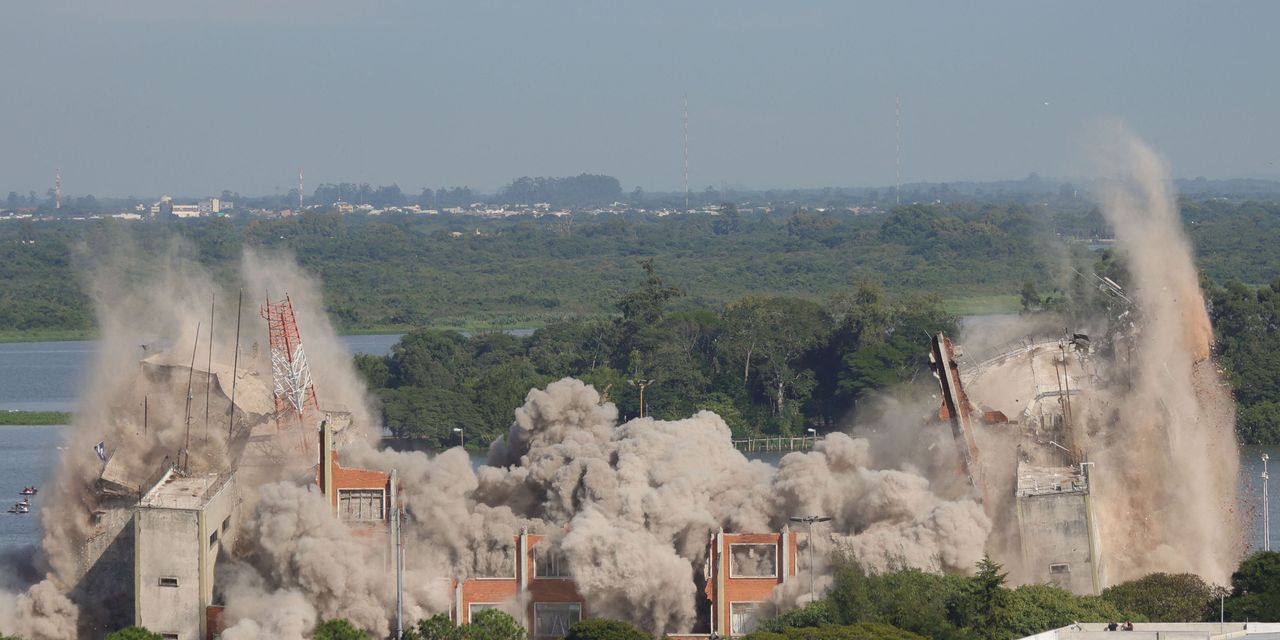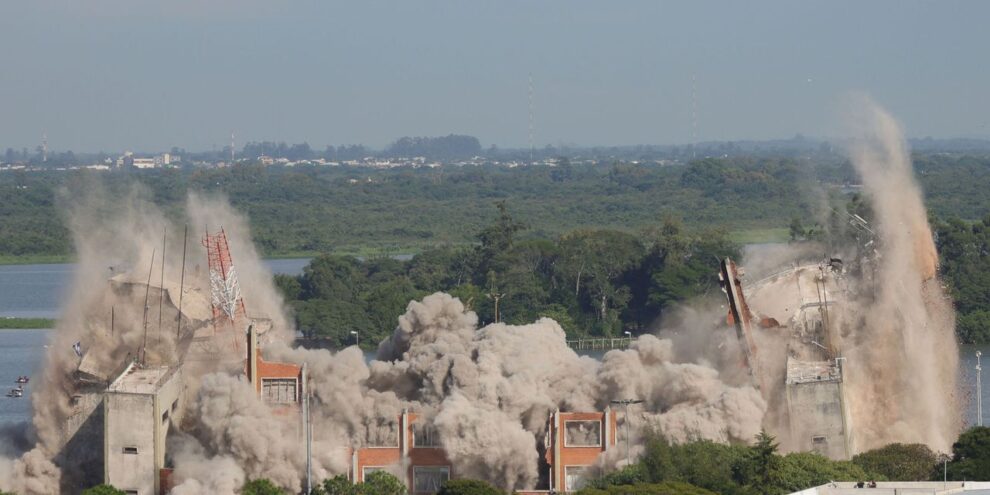
High inflation and rising interest rates are slamming the brakes on U.S. growth, economists say, but there’s still a narrow chance to avoid a second recession in three years.
The outlook is not looking good, to be sure.
The economy shrank in the first quarter for the first time since the onset of the pandemic. The U.S. is also on track to expand less than 1% in the spring based on the latest Wall Street estimates, putting it dangerously close to recession territory. A recession it typically seen as two consecutive quarters of declining growth.
The most recent batch of economic signposts haven’t given much reason for optimism, either.
The housing market has stalled due to soaring mortgage rates. Retail sales fell in May for the first time in five months. The number of people applying for unemployment benefits rose in June to a five-month high. And surveys of consumers and business leaders show grave worries about the rest of the year.
All the bad news helped drive the Dow Jones Industrial Average DJIA, -0.13% below 30,000 for the first time in 17 months this week.
“A slowdown has already begun,” said Bill Adams, chief economist at Comerica Bank in Dallas.
The Federal Reserve on Wednesday acknowledged the fresh challenges faced by the economy, chopping its estimate of U.S. growth this year to just 1.7% from 2.8%. Last year the economy expanded at a frothy 5.7% pace.
The Fed also downgraded its assessment of the economy after approving the biggest increase in interest rates in 28 years to try to lasso runaway U.S. inflation. The cost of living has surged 8.6% in the 12 months ended in May — the biggest increase in 40 years — and it’s likely to go even higher over the summer.
Read: Fed Rate Hikes Will End Sooner Than You Think. What That Means for the Stock Market
The central bank is poised to jack up a key short-term U.S. interest rate to 3.4% by year end. It had kept its benchmark rate near zero during the pandemic, a cheap-money strategy that helped the economy recover faster but also planted the seeds of high inflation.
Rising interest rates are already throwing cold water on interest-sensitive parts of the economy such as housing. The cost of a 30-year fixed mortgage has leaped from 2.75% last fall to more than 6% this month, freezing out lots of buyers.
That’s not all. Higher rates will make it more expensive to buy a car, rely on credit cards, take out a business loan or sell corporate bonds.
“There are certainly a lot of challenges ahead,” said Sam Bullard, senior economist at Wells Fargo in Charlotte. N.C. “The latest incoming data clearly signals there has been a loss of momentum.”
Yet for the all the growing talk of recession, the U.S. economy is still by many measures quite strong.
“ “The underlying health of the economy seems better now than you would normally see when it’s about to fall into recession.” ”
Healthy vital signs
Unlike in the 2007-2009 recession, for example, consumers and businesses have relatively little debt and the U.S. banking system is sound.
Most households were able to save lots of money during the pandemic owing to government stimulus payments and regular expenses they were able to forgo when they were working from home — clothes, gas, transportation, travel, entertainment and so forth.
By some estimates, consumers have as much as $2 trillion in “excess” savings compared to before the pandemic.
Consumers, the main drivers of the economy, are also spending lots of money. The only thing that’s changed is that they are spending relatively less on goods such as cars or computers and more on services such as dining, leisure and travel.
Restaurant reservations tracked by OpenTable, for instance, recently hit the highest level on record. Demand for gas entering the summer driving season has surged despite record prices. Hotel bookings have soared. And international travel is approaching pre-pandemic levels.
“ “There is still demand. People want to get out and do stuff. They have the funds to do that. Around here [Charlotte, N.C.] you go to restaurants and they are all full.” ”
“There is still demand. People want to get out and do stuff. They have the funds to do that,” Bullard said. “Around here [Charlotte, N.C.] you go to restaurants and they are all full.”
What’s helped Americans endure high inflation is the strongest labor market in decades.
The U.S. has recovered almost all 20 million jobs lost during the pandemic and hiring is still quite robust. The economy has added an average of 408,000 jobs a month in 2022.
“The underlying health of the economy seems better now than you would normally see when the economy is about to fall into recession,” said chief economist Richard Moody of Regions Financial. “The economy has some capacity to withstand higher rates and inflation. That capacity is not infinite, but there is some leeway.”
Although a smattering of high-profile companies have recently announced layoffs, job openings have stayed near a record high.
“Aside from crypto firms and a few tech companies, there is virtually no chatter about layoffs in the news,” said chief economist Stephen Stanley of Amherst Peirpont Securities.
Stanley, a frequent Fed critic who was warning about high inflation last year, doesn’t think the economy and inflation will cool off quite as fast as the Fed would like.
The biggest labor shortage in decades could even be the economy’s saving grace.
Tens of millions of workers have taken advantage of the demand for labor, quitting one job for another and often receiving higher pay.
Average hourly wages for “non-supervisory” workers — anyone who’s not a boss — have jumped 6.5% in the past year to partly alleviate the pain from high inflation.
The difficulty in finding and retaining talent, what’s more, might make companies more reluctant to carry out mass layoffs except as a last resort. It would be hard to refill those positions once the economy improved.
“Think about how firms manage labor. Does it make sense to think they will lay off workers in large numbers?” Moody said. He pointed out the labor shortage was emerging even before the pandemic and is likely to persist for years.
What will ultimately decide the fate of the economy, analysts say, is just how high the Fed will have to raise interest rates to quench incendiary inflation — and how quickly price pressures ease.
If inflation doesn’t slow sharply by year end and the central bank has to lift rates to 4% or higher, as some predict, it would probably be too much for an economy that has gotten addicted to low interest rates over the past decade.
Inflation itself is also subject to the whims of forces beyond the U.S. control such as the war in Ukraine. The conflict drove prices of oil and grains to stratospheric levels and has inflamed already high inflation. Russia and Ukraine are big producers of food and energy.
Another huge source of inflation, ongoing supply shortages and bottlenecks in global trade, are also largely beyond the control of the Fed. Higher rates could help by slowing demand and allowing suppliers to catch up.
“To avoid a recession the economy will need a little bit of good luck from energy prices and events outside the US.,” Adams of Comerica said.
The U.S. economy has increasingly less margin for error, though.
“The window for avoiding a recession is narrower today, but a downturn isn’t unavoidable,” said lead U.S. economist Oren Klachkin of Oxford Economics.






